Affiliate disclosure: This post may contain affiliate links. Please see our Privacy Policy.
Beefsteak Mushrooms (Fistulina species, also known as Ox Tongue Mushrooms) are unique meaty mushrooms that foragers call “steak of the woods.” If you want to see steak grow on trees, try your hand at finding these!

This article was written by Timo Mendez, a freelance writer and amateur mycologist who has foraged wild mushrooms all over the world.
The Beef Steak Mushroom is one of the strangest and most unique wild mushrooms out there. It has a gelatinous texture and a blood-red color that could easily fool anyone into thinking it is of animal origin.
From a culinary standpoint, this mushroom is also quite unique. It can have a tart, acidic flavor, unlike that of any other species. It is also one of the few mushrooms with a history and reputation for being consumed raw (if you didn’t know, most mushrooms shouldn’t be consumed without proper cooking!). When served properly, it is delicious and definitely a unique gastronomic experience for all involved! In many countries it’s called Ox Tongue, although I’m personally a fan of the Polish name; Oak Tongue. With proper imagination, you can easily see how it looks like a tree sticking its tongue out towards you!
From a forager’s perspective, this is an absolute gem to find. It is extremely easy to identify, albeit rather rare and limited to specific tree hosts. Despite this, avid hunters can quickly accumulate spots as this mushroom tends to occur in the same place year after year.
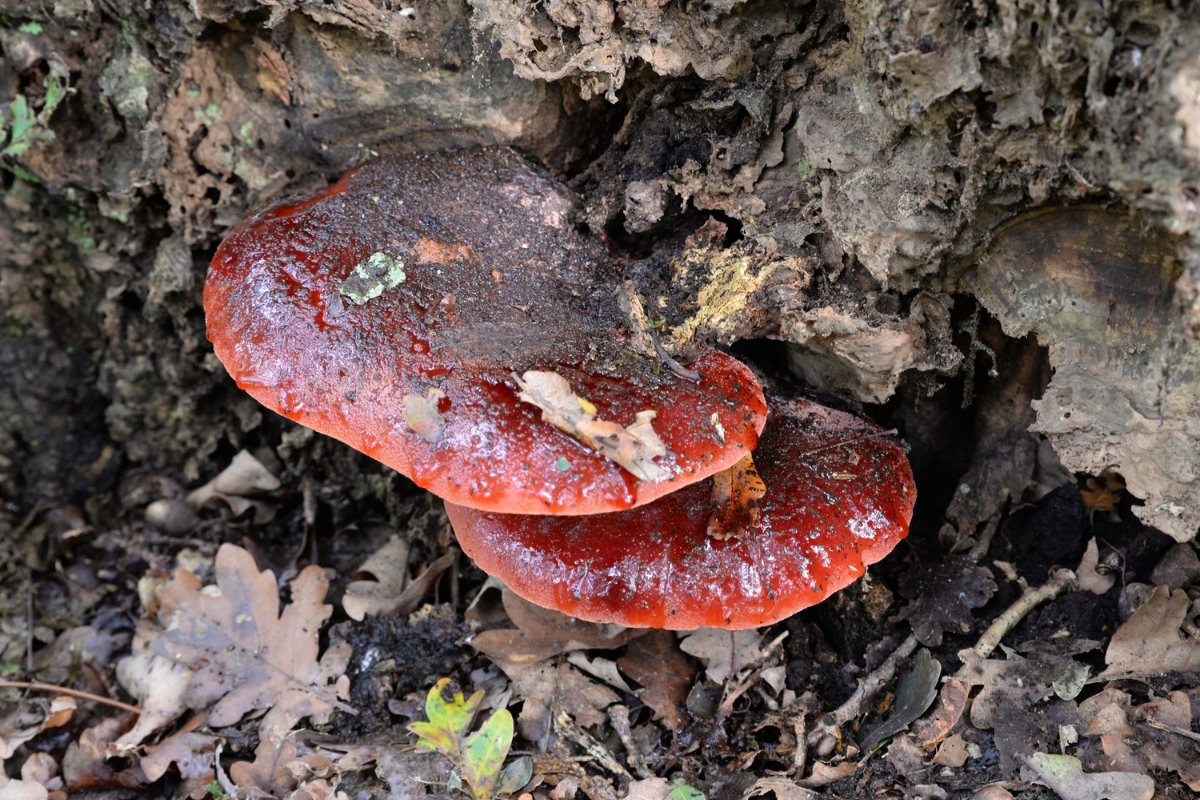
Natural History Of Beefsteak Mushrooms
Beefsteak mushrooms are wood-loving saprobes that are often found at the base of living or dead trees. They can grow as weak parasites, although the damage they cause is relatively little compared to other fungal pathogens. Some species are known to feed on wood tannins as opposed to the wood itself, leaving behind a red-stained wood that is prized by carpenters.
The most commonly used scientific name for Beefsteak mushrooms around the world is Fistulina hepatica, although the true diversity of this mushroom is not well understood. There are likely many undescribed species that currently fall under this name, especially in the Americas. Thankfully, it doesn’t matter too much since all are edible and pretty much identical other than host-specificities and microscopical features. The etymology of Fistulina hepatica is derived from Fistula which means little tubes (regarding the pore structure) and hepatica which means liver, due to its meaty liver-like appearance.
Beefsteak mushrooms have a wide variety of tree hosts, but the most predominant around the world are oaks and their close relatives. An exception is in the western United States, where they are predominantly found in association with Wax Myrtle. In Europe, they can also be quite common with sweet chestnuts (Castanea sativa). While it is a bit rare, other tree hosts that have been reported include beech (Fagus), ash (Fraxinus), linden (Tilia), horse chestnut (Aesculus), maple (Acer), western chinkapin (Chrysolepis chrysophylla), and possibly birch (Betula).
How To Identify Beefsteak Mushrooms
Identifying Beefsteak is pretty darn easy, and it’s hard to go wrong. It’s the only mushroom that looks like a piece of red meat growing out of the side of a tree.
To begin, this mushroom always grows from wood. This may be a dead tree, a fallen trunk, or even a living tree. They are also quite common on tree stumps. You’ll seldom find this growing directly from the soil, although it can appear this way when growing at the very base of a tree.
From afar, the first thing you’ll probably notice is the color. It ranges from blood-red in younger specimens to a tan brown in older individuals. The consistency of the young mushroom is extremely gelatinous and goey, while older specimens tend to harden up and become dense.
When young, the underside of the mushroom is pale white to pink with easily visible pores and dotted with rose-colored points. The pore surface is beautiful and often bumpy when young. The underside eventually becomes smooth as the mushroom grows. When bruised, the underside quickly darkens into a brownish color.

Occasionally, the mushroom has a small stem, but it tends to grow in the typical hemispherical shape typical of polypores. Occasionally, you will see drops of blood-red metabolites that are exuded by the mushroom. This bleeding is characteristic of Beefsteak mushrooms and only becomes more evident if you cut into the mushroom. The spores of the Beefsteak mushroom are white.
The smell is rather mild and reminiscent of fungal mycelium. The taste, on the other hand, is pretty darn unique as it is tart and acidic. This is especially true for older specimens. With a quick chew-and-spit test, you can easily verify the identity of the mushroom with certainty. You can eat this mushroom raw, so if you like it, go ahead and eat it!
Even though this mushroom is considered extremely easy to identify, always confirm it with an experienced mushroom hunter if you have any doubts. It is recommended to use multiple resources, not just this guide, to identify it properly!
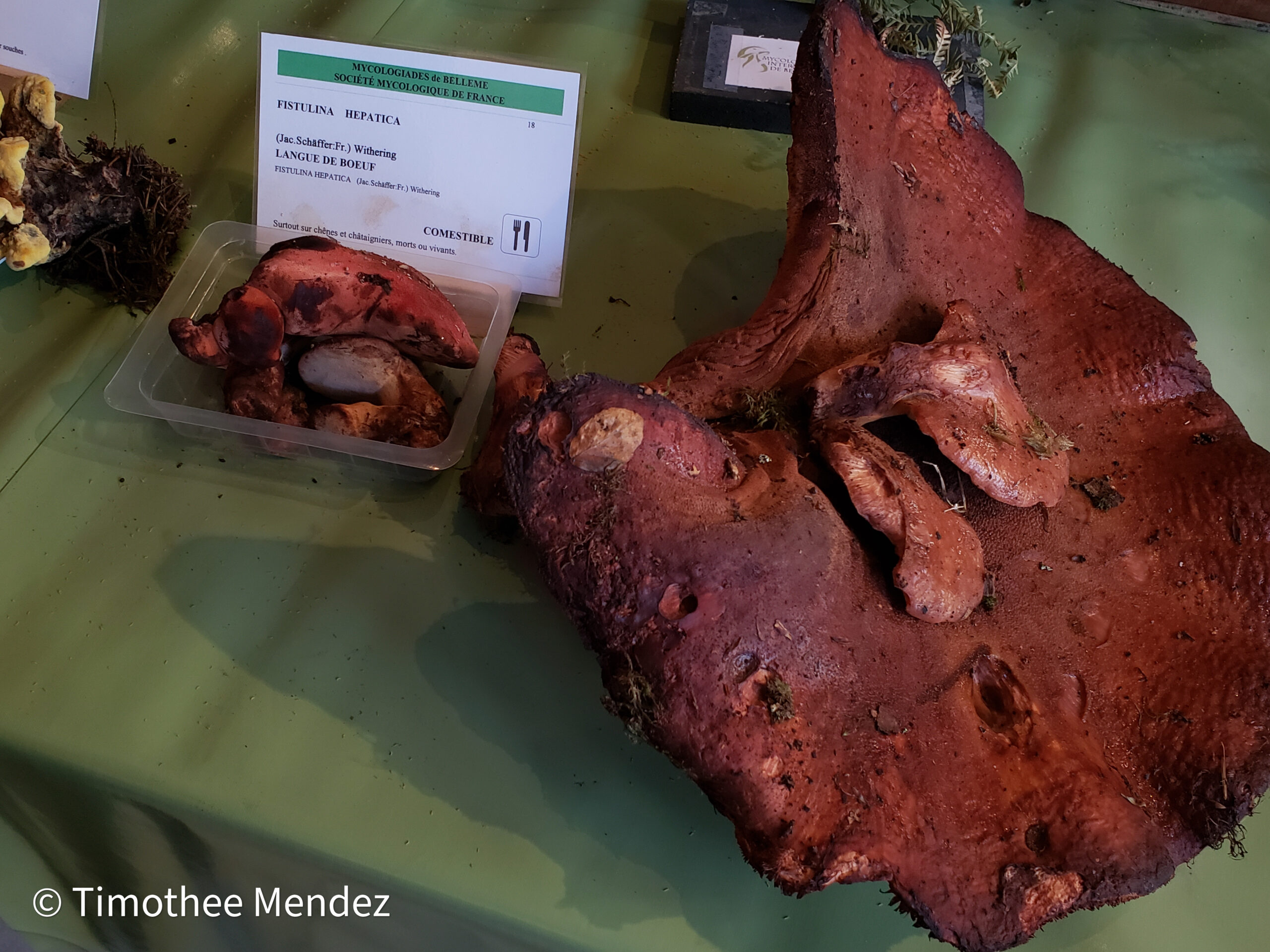
Identification Features Of Beefsteak Mushroom
- Grows from the base of trees, trunks, and stumps
- It has a meat-like and gelatinous texture, especially when young.
- It is bright red when young and darkens with age.
- Typical shelf-fungus shape with little to no stem.
- The fleshy is soft and releases a blood-like juice when cut
- The underside is white to pink with small visible pores and bruises brown.
- No distinct smell but acidic in taste.
Beefsteak Mushroom Lookalikes
Honestly, there isn’t too many mushroom that look like the Beefsteak. Some polypores can have similar characteristics, but they usually have much denser flesh and darker brown tones. If you’re mushroom isn’t gelatinous or jelly-like, then it’s probably not a beefsteak.
Perhaps from afar, you may be able to mistake it for Ganoderma due to the red coloring, but Ganodrema is much tougher.
Ishnoderma is another genus of polypores that could resemble Fistulina, but again it is much tougher and darker in color.
Where To Find Beefsteak Mushrooms
Beefsteak Mushrooms are rarely found in abundance, and their habitat is rather limited to specific tree hosts. Generally speaking, it is not very abundant, although within certain habitats it can be more common. It’s not a mushroom you’ll typically fill up baskets with, but if you know what you’re doing, you can start finding spots.
The nice thing is that these mushrooms will grow year after year in the exact same spot. Occasionally, the mushrooms may take a rest year, and eventually, the individual could die out, but generally speaking, you can always return to the same spot. Thanks to this, you can easily accumulate spots over time and visit them once you know the season is ripe for beefsteaks.
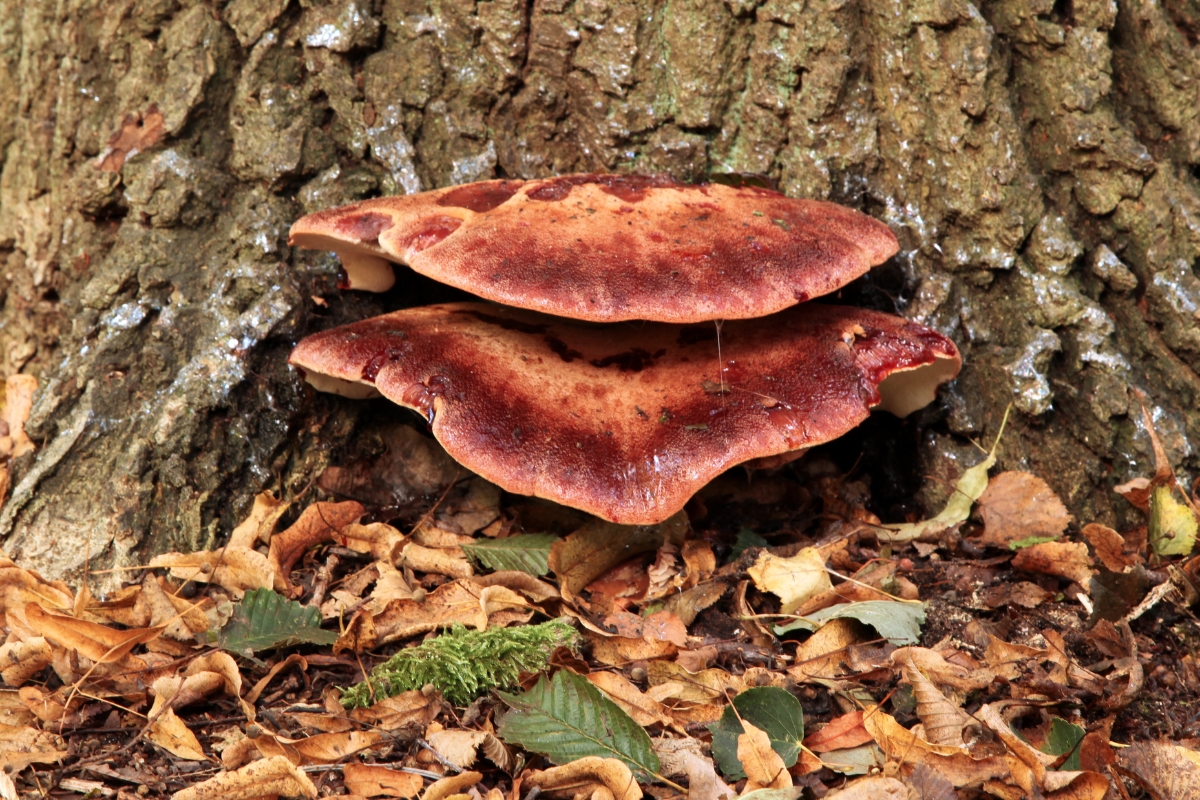
Western North America
In Western North America, the range is rather limited to the California and Oregon coasts. It can be found in the interior of these states, but it is much less common. The tree hosts for Beefsteak are Wax Myrtle (Morella californica) and Western Chinquapin (Chrysolepis chrysophylla), although it is rumored to occur on other western hardwoods.
If you’re looking for Beefsteak on the west coast, I suggest looking for Wax Myrtle which can easily be found in swampy wetland soils in coastal regions. Beefsteak is non-existent or practically absent from the Rockies, Sky Islands, and other parts of the interior western United States.
Eastern North America
Beefsteak is pretty widely distributed in Eastern North America. It is typically found growing on oak or maple, but it can occur with other hardwoods. Recently, a new species was described in the eastern United States, which goes by the name Fistulina americana (Zhou, 2022). In the southeast, they are most abundant in the Appalachian Mountains and their surrounding foothills.
It is largely absent from the Gulf States, although it is occasionally found in Florida.
In the northeast, they continue to be abundant in the Appalachians up into New York and Massachusetts. They are still present but have become less common in the northern states that border Canada. Beefsteak mushrooms can be found in Canada, in the Toronto and Montreal regions.
Beefsteaks are found in the Great Lakes region, particularly in Michigan. In the north, the distribution goes as far west as western Minnesota.
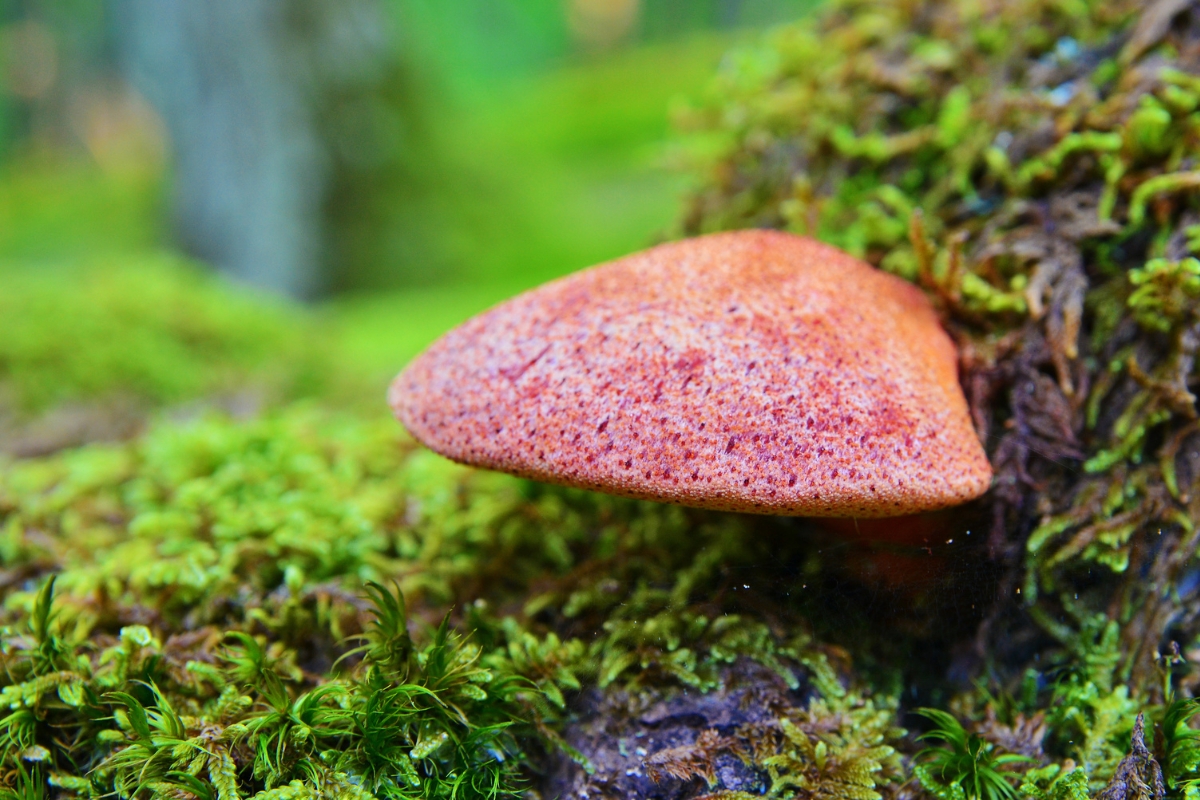
Europe
Beefsteak is pretty well distributed across deciduous hardwood forests in Europe. They typically occur with Oaks, Chestnuts, and may occur with other hardwoods. Here, they are often found in association with rather large and mature trees. They are most common in continental climates such as those of northwestern Spain, France, Germany, and the UK.
This being said, they can be found up into Finland and as far east as Russia.
Other Regions
In Mexico, you can find Fistulina guzmanii growing with a native Mimosa species. Fistulina subhepatica occurs in Asia in association with lithocarpus. In Australia, you can find Fistulina spiculifera, particularly in the southeast and in Tasmania.
In the southern parts of Chile, you can find Fistulina antarctica in association with Nothofagus.
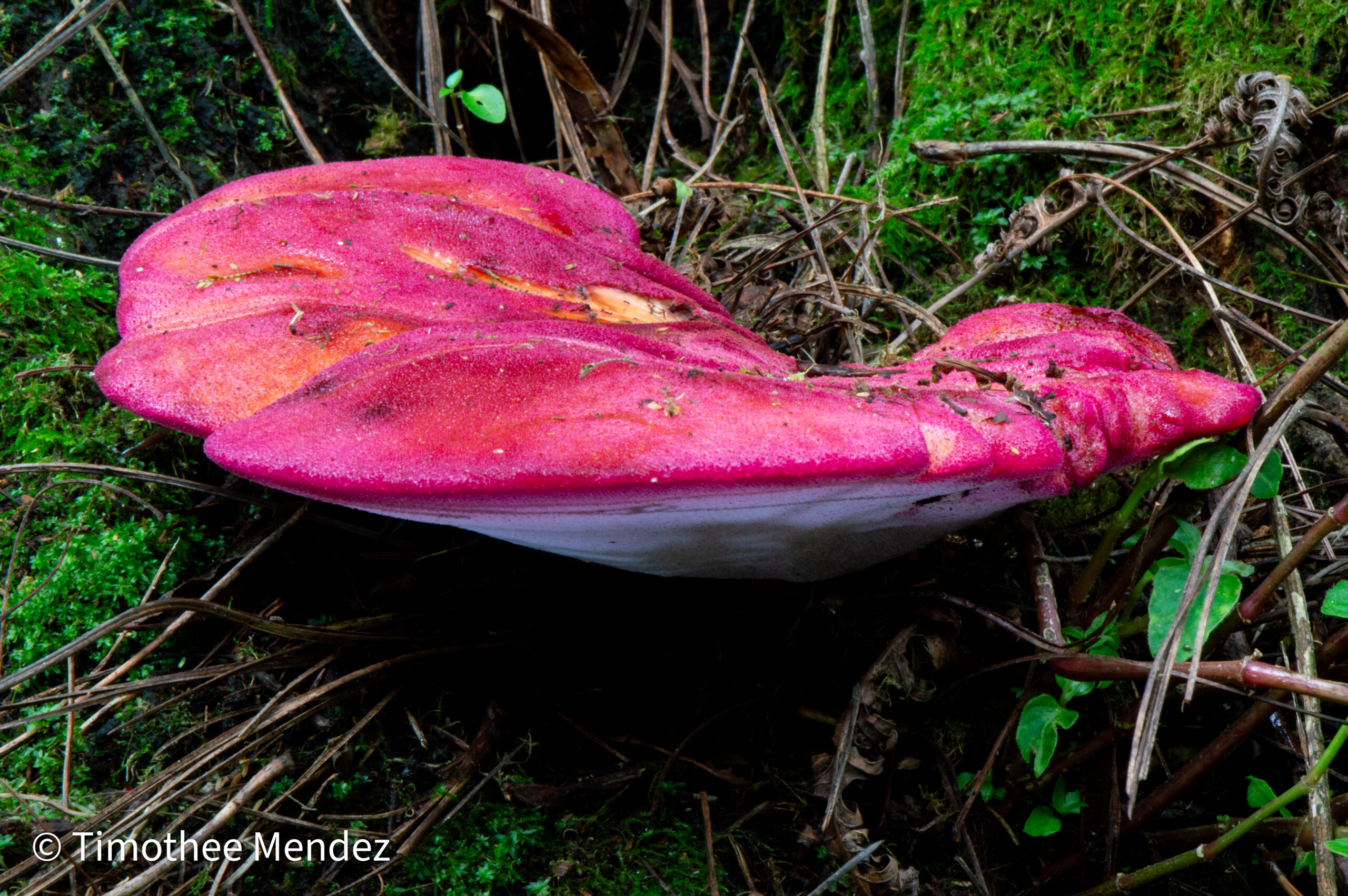
When To Find Beefsteak Mushrooms
- Western United States (September–January): In coastal California and Oregon, this mushroom begins fruiting in the fall and can be found into the winter. The best time to look for them is in October and November.
- Eastern United States (June–October): In the eastern United States, Beefsteak begins fruiting with the beginning of the summer rains. The season typically peaks in August and September.
- Europe (July–November): The Beefsteak season begins with summer rains in July and continues until temperatures drop in November. Peak season typically occurs around September. In areas with milder climates, such as Portugal, the season occurs a bit later, peaking in October and going into December.
- Australia: (March-July): From March to July and peaking in May.
- South America (January–June): The season typically peaks around April and May.
How To Harvest Beefsteak Mushrooms
Whether you harvesting anything or not, always make sure to be respectful and considerate when spending time in a forest. Don’t litter, cause erosion, or disrupt the peace of these natural environments. Have respect for locals who may utilize these lands and ask for permission to access or harvest them if necessary. In some places, like Poland, Beefsteak mushrooms are a protected species, and harvesting them is prohibited.
Once you find a Beefsteak mushroom, you should consider whether it is worthwhile to harvest. If the specimen is very young and small, you should let it continue growing. If the mushroom you find is old, woody, and seems to be past its prime, there’s no point in harvesting it either. You want the mushroom to be red, juicy, and relatively soft to the touch. Also, always leave some mushrooms to sporulate if you find more than one.
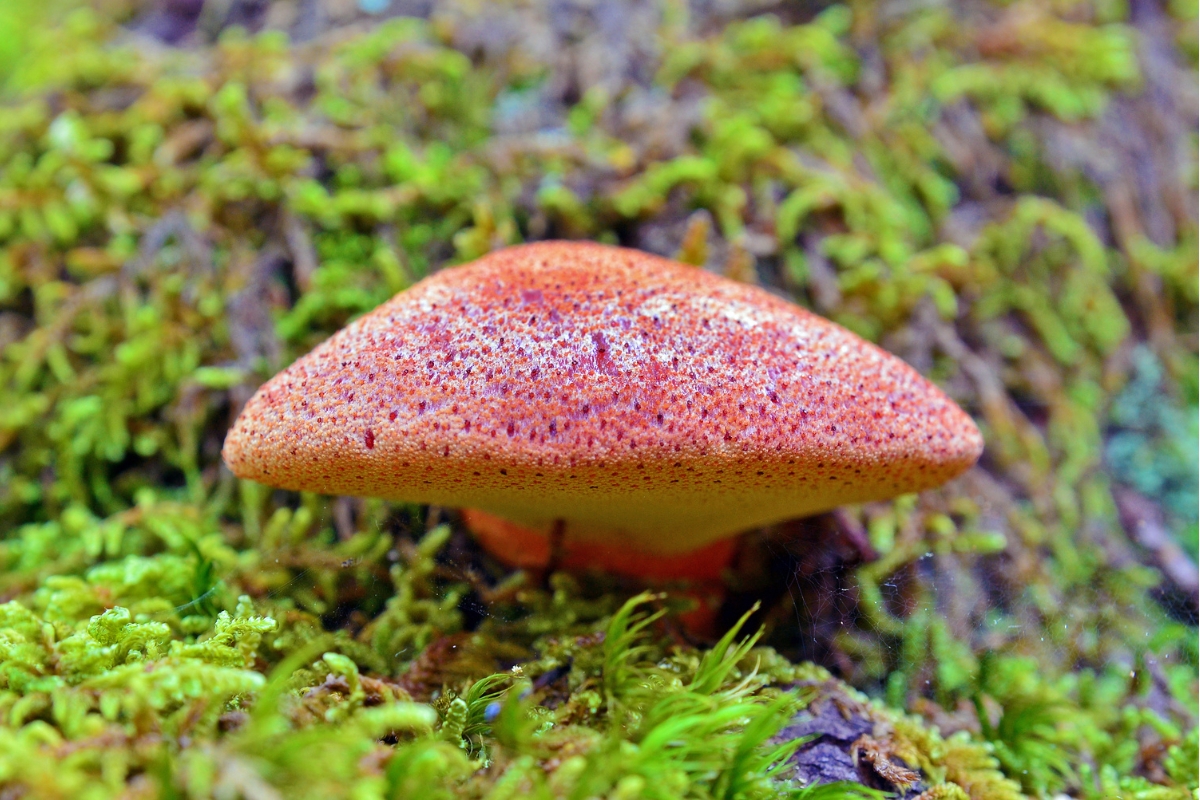
While I know there is a debate regarding cutting vs. plucking, I recommend just plucking the entire mushroom. The few studies done on this subject show that picking does not adversely affect mushroom production (1, 2). Meanwhile, mushroom cultivators know that if you leave a cut-stem butt attached, you risk introducing pathogens and illness into your grow. That’s why I generally always pick, not cut, my mushrooms. But honestly, do what feels right to you and respect the local customs, if there are any.
After harvesting, remove dirt, leaves, and the woody stem butt. It’s best to keep your mushrooms clean during harvesting, as the dirt will only get rubbed in and be more difficult to remove. It’s recommended to harvest using baskets because it keeps the mushrooms in better condition. It is also believed to help with the release of spores while you wander through the forest. Mesh bags are another alternative.
It’s not recommended to store Beefsteak mushrooms for more than 2–3 days. If anything, they should be eaten the same day as harvesting, as this mushroom doesn’t have a particularly long shelf life. For storage, keep them in a breathable container in a cool, dark place.
Cooking and Eating Beefsteak Mushrooms
Beefsteak can be a polarizing mushroom among mushroom enthusiasts. Some folks find it endlessly fascinating—a unique mushroom that provides a culinary experience unlike any other. It’s soft, tart, and has a dazzling color that breaks away from the idea of a mushroom.
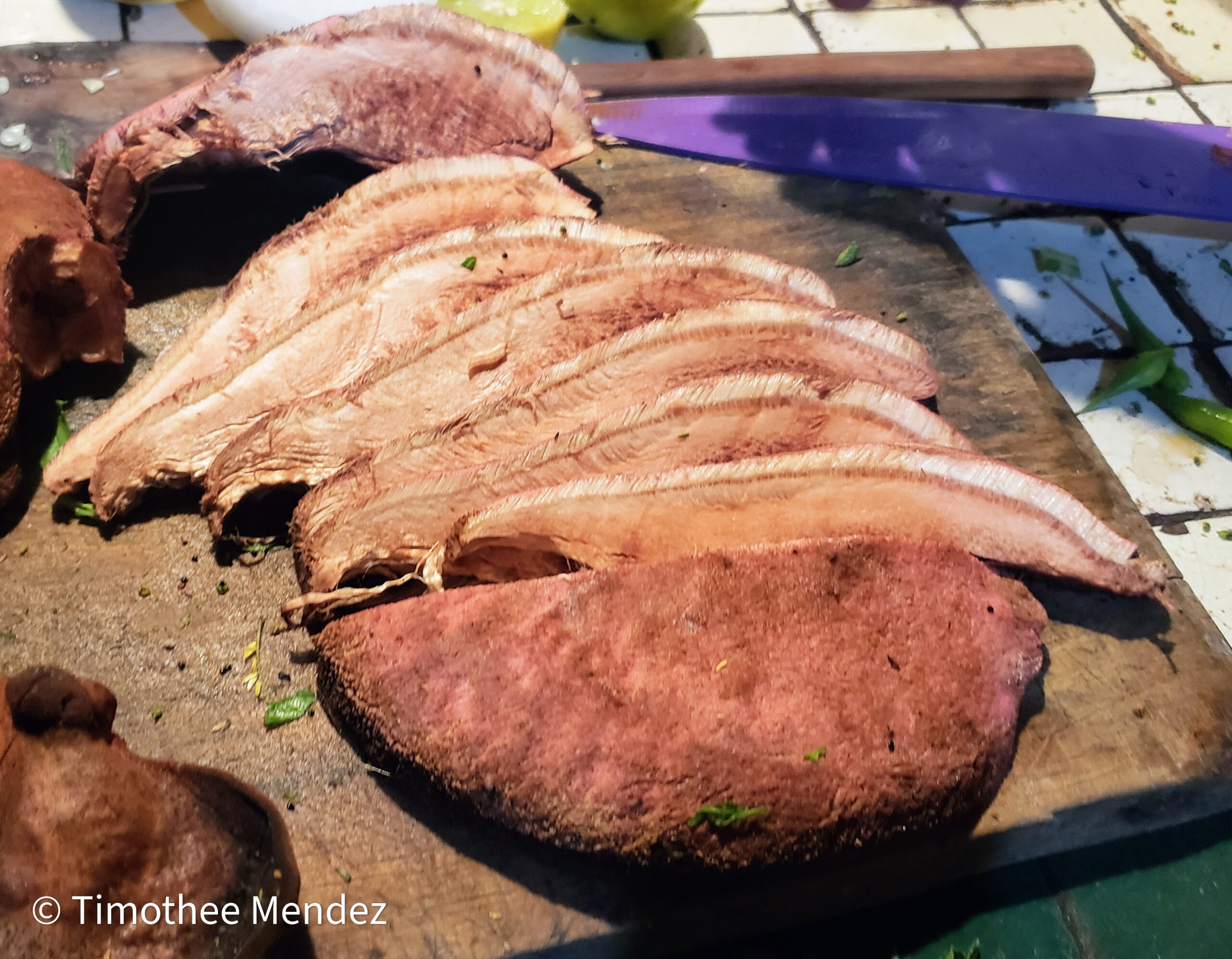
Other mushroom lovers don’t find it interesting. Whether it was cooked, raw, or prepared in a variety of ways, they considered it a mediocre mushroom. I’ll admit, that the acidic flavor of older specimens can be pretty intense, and yes, the texture is a bit unusual. Yet, I’m in the first camp of individuals who always get excited by the opportunity that this mushroom presents. I definitely will go out of my way to find this mushroom because, I think, with proper creativity, this is an absolutely delicious mushroom.
What’s curious is that I’ve heard many different reports considering the acidity of this mushroom. Personally, the ones I’ve tried have always been pretty acidic. Not like biting into a lemon, but the dominant flavor of the mushroom. Other folks claim that even in the older specimens, they didn’t taste very acidic. One friend of mine suggests that where he finds them, they are more acidic when young. While a lot of this might just have to do with the age or size of the mushroom, I’m sure this also varies greatly depending on the species (many of which are undescribed) and the type of tree host.
For eating raw, there are countless ways you can prepare them. I like to slice them thin lengthwise to get these beautiful slices that look like marbled meat. I arrange these on a plate with sliced heirloom tomatoes and then sprinkle them with salt, pepper, and a dash of olive oil. Finally, top it off with parsley, and voila! You can also make a quick sauce by blending olive oil, garlic, cilantro, and a touch of apple cider vinegar.
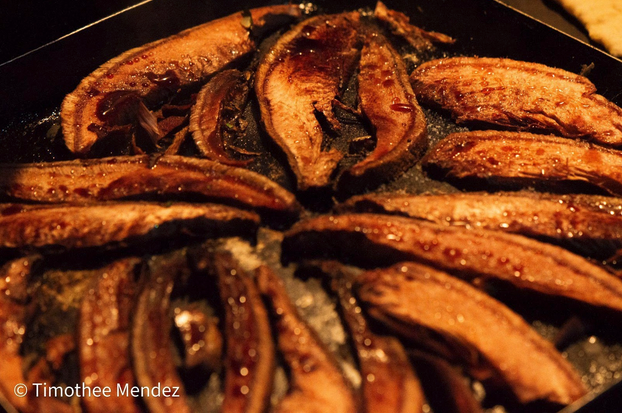
For cooking, the possibilities are endless. I like to cut the mushrooms thinly, and then cook them simply with a bit of oil, salt, and garlic. Cook on both sides until well seared. Take these slices and use them to garnish pasta, salads, soups, or whatever dish you are preparing as a main meal. You can also just include them as a tasty side. Another fun recipe I did was just cooking it up with a bunch of onions, garlic, and a bit of red chili flakes. Use this to make a “Philly-Cheese Steak” type of sandwich, although I tend to add raw veggies to give it that fresh touch.
Preserving Beefsteak Mushrooms
There are many ways to preserve Beefsteak mushrooms, but I have my personal favorite. It’s an obvious choice once you think about it.
Mushroom Jerky
This is my favorite. To do this, I simply make a simple marinade with soy sauce, brown sugar, chili flakes, and a bit of rice vinegar. Barbeque sauce is also another simple option, but you can use your own creativity for this. I let it marinate for a couple of hours or overnight in the fridge, then I cook it in the marinade for just 5–10 minutes. After this, I place them on a rack to drain any excess juices before placing them into the dehydrator. Dehydrate it until it is almost completely dry but still a bit chewy. It’s the best.
Freezing
Simply sauté it until cooked, and then freeze it in a ziploc bag or tupperware. You can add salt, pepper, garlic, or whatever seasoning you’d like. This way, they are ready to go and add to any recipe you want. Do not freeze it raw; it will become a gooey mess once thawed.
Drying
You can dry it, but from my experience, it never rehydrates to what it was. It becomes a bit more chewy and may be difficult to digest. If dried, I’d recommend powdering it and using it as a seasoning.
Canning or Pickling
I’ve never done this because, honestly, I rarely have an abundance of this mushroom. This being said I think it has great potential for either being canned or pickled in a seasoned brine.
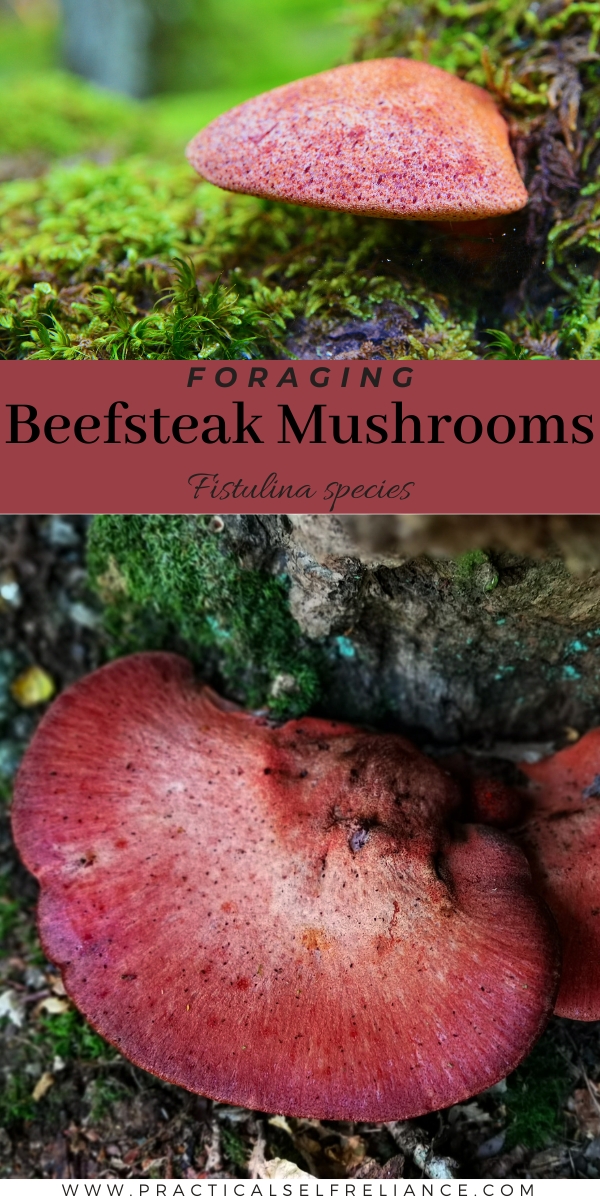

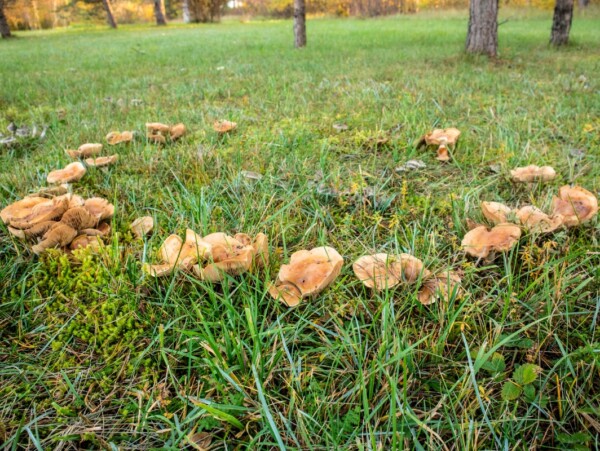
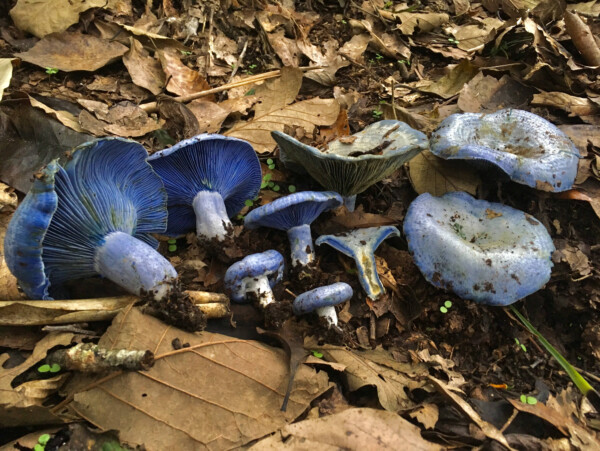
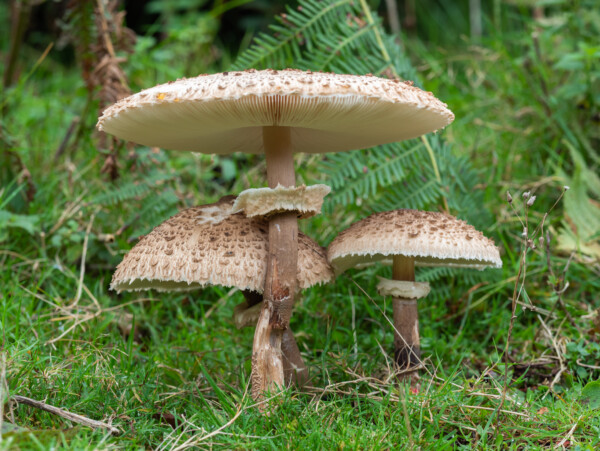
One of my all time favorites! Raw/Sashimi style with rice vinegar, scallion oil, toasted scallions, very thin sliced jalapeño peppers and cilantro.
Sounds delicious.
well this mushroom really motivates me to research in fungus